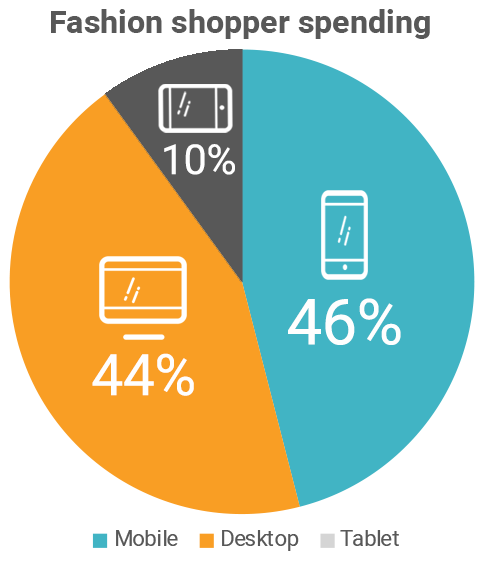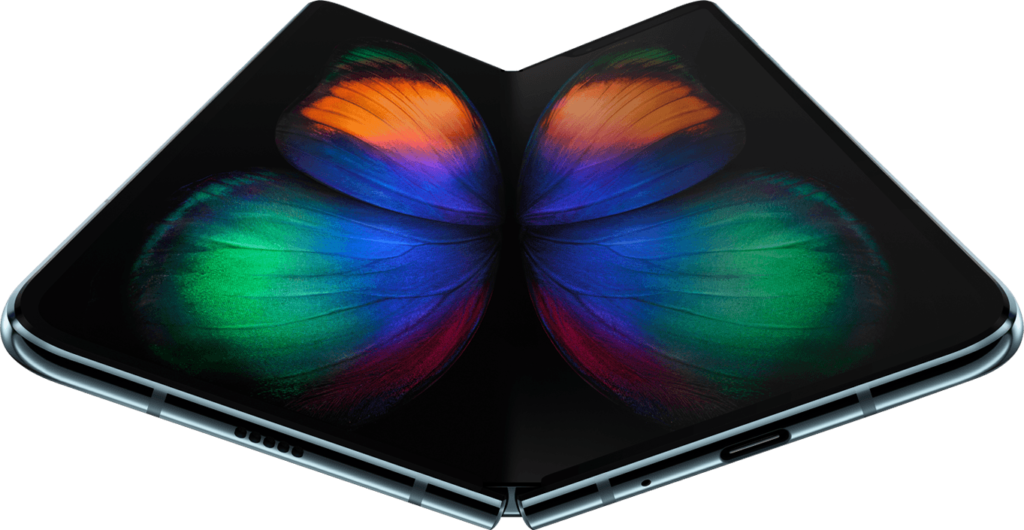This month in the world of app commerce – February

This month we’ll be taking a look at the latest research around consumer preferences for mobile and app experiences, the biggest announcements in smartphone technology and the potential consequences for app commerce.
Consumer confidence in mobile and app commerce grows
The evidence for the preference of mobile experiences over desktop continues to grow, with mobile set to account for 54% of online sales in 2019. Latest research from Nosto claims that fashion shoppers spend more via mobile (46%) than desktop (44%). This has also been reflected in research finding that millennials prefer to make purchases via smartphone (58%) over desktop. Meanwhile, findings from GlobalData also suggest that 67.7% of 16-24 year olds prefer to use mobile apps over brand’s mobile optimised sites and that 61.4% of UK shoppers asked, said they prefer to make purchases via retailer’s apps too.
What’s driving the preference for app experiences?
The expectation for mobile shopping experiences is inevitably being driven by the apps we use
Have smartphones reached a tipping point?
In the market for smartphones
Not only has retail suffered over the last year but the tech giants and smartphone manufacturers have felt the pinch too. Smartphone sales growth stalled in Q4 and only grew 1.2% overall for 2018 according to Gartner. Many high-end smartphone owners chose not to upgrade their mobile phones.
Despite Apple’s company value exceeding $1 Trillion earlier in 2018 which seems no easy feat they have still felt the pinch with smartphones sales, seeing a 15% year-over-year decline in revenues driven by iPhones, and has been claimed to be driven by Apple’s reluctance and stubbornness not to produce more affordable models. However, even amongst those retailers who have made a success of manufacturing a wide range of smartphones have suffered. Both Samsung and LG saw profit drops in Q4, Samsung seeing the largest decline in 2 years and LG actually making a loss.
Smartphone tech giants are standing on a precipice and development has stagnated over recent years. Generally, smartphone tech is in a pretty good state across the board and development has been incremental with each iteration. Shoppers don’t have the incentive or motivation to upgrade when their one or
Samsung pioneers disruptive mobile tech
Unfolded | The future is now
Last year, Samsung announced plans for their groundbreaking latest tech and the time has finally come. Samsung officially launched their latest disruptive tech set to drive the mobile market, a phone with a foldable screen, officially titled the Samsung Galaxy Fold and will be available for purchase in this coming April. This new tech combines both the smartphone and tablet experiences, unfolding to reveal a
At the World Mobile Congress this month, smartphone manufacturers by the likes of Huawei and Motorola are also expected to announce their iterations of smartphones with folding screens. You may remember from our blog in April 2018 that following on from the news that Samsung were developing a foldable phone, as is become tradition, Apple were planning to follow up with their own folding screen tech aimed for release in 2020.
Fad or future?
This new tech poses a lot of questions. Are folding screens here to stay? What does this mean for app commerce? If folding screens become the norm and dominate the way we interact with the internet we wouldn’t be surprised to see the use of retailer’s apps continue to grow. Folding screens blur the lines between mobile and tablet devices, and in doing so they will empower retailers to provide larger imagery, more information and more immersive experiences to consumers. We would anticipate that given time, tablet use will continue to fall and the migration of the dominant shopping channel to mobile from desktop will excel. Having a larger screen readily available and that folds to fit in your pocket has great potential for retailers’ app strategies.
Is this development drastic enough?
Meanwhile, folding phones do hold a rather compelling case, the initial price tags look to be pretty steep, Samsung’s latest
Get more insights with our monthly newsletter
Reported by Samantha Rigg




